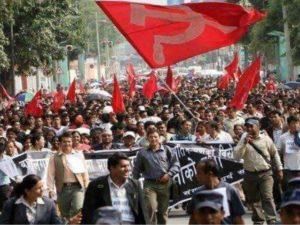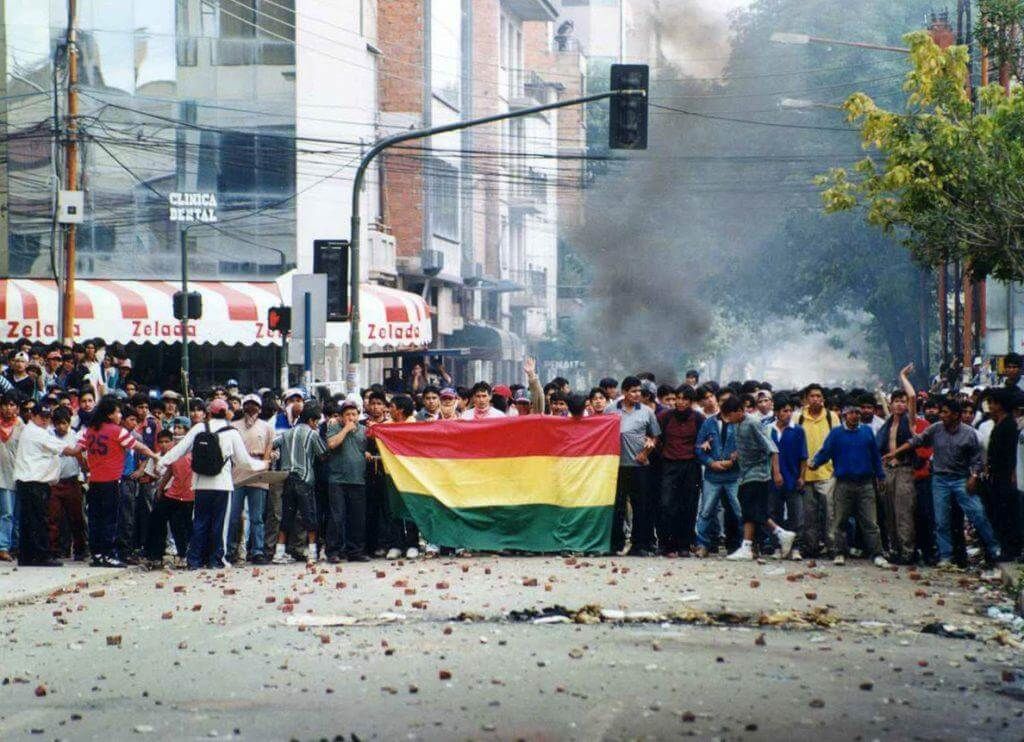Class 10 Civics Notes - Popular Struggles and Movements
Popular struggles in Nepal and Bolivia

Movement for democracy in Nepal
• Nepal won democracy in 1990.
• King Birendra, who has accepted constitutional monarchy, was killed in a mysterious massacre of the royal family in 2001.
• King Gyanendra, the new king of Nepal, was not prepared to accept democratic rule.
• In February 2005, the king dismissed the then Prime Minister and dissolved the elected Parliament.
• The movement of 2006 started to regain democracy.
• All major political parties formed a Seven Party Alliance (SPA) and called for a ‘four day strike’ in Kathmandu, the capital of Nepal.
• The protest turned into indefinite strike joined by Maoist ad other organisations also.
• They demanded restoration of parliament, power to an all-party government and a new constituent assembly.
• On 24 April 2006, the last day of the ultimatum, the king was forced to accept all the three demands.
• Girija Prasad Koirala became the new Prime Minister of the interim government as chosen by SPA.
• The Maoists and SPA agreed to have a new Constituent Assembly.
• This struggle came to be known as Nepal’s second movement for democracy.
Bolivia’s Water War
• Bolivia is a poor country in Latin America.
• The World Bank forced the government to give up its control of municipal water supply and sold these rights for the city of Cochabamba to a multi-national company (MNC).

• After controlling water supply, the company increased the price by four times.
• This led to a spontaneous popular protest.
• In January 2000, a new alliance of labour, human rights and community leaders called FEDECOR organised a successful four-day general strike in the city.
• The government agreed to negotiate and the strike ended but nothing changed.
• The protest started again in February and police used brutal methods to control it.
• Another strike followed in April and the government imposed martial law.
• But the power of the people forced the officials of the MNC to flee the city and made government accept all their demands.
• The contract with the MNC was cancelled and water supply was restored to the municipality at old rates.
• This came to be known as Bolivia’s water war.
Mobilisation and organisations
Who joined struggle in Nepal?
• SPA or the Seven Party Alliance in Nepal which included some big parties that had some members in the Parliament.
• The protest was joined by the Nepalese Communist Party (Maoist) which did not believe in parliamentary democracy.
• Other than political parties, all the major labour unions and their federations joined this movement.
• The organisation of the indigenous people, teachers, lawyers and human rights groups also extended support to the movement.
Who joined struggle in Bolivia?
• The protest against water privatisation in Bolivia was led by an organisation called FEDECOR.
→ This organisation comprised local professionals, including engineers and environmentalists which were supported by a federation of farmers, the confederation of factory workers’ unions, middle class students from the the University of Cochabamba and the city’s growing population of homeless street children.
• Later, the movement was supported by the Socialist Party. In 2006, this party came to power in Bolivia.
Differences between political parties and pressure groups
• Pressure groups do not enjoy power directly, whereas the political parties do.
• Pressure groups usually represent a particular section or view of the society; on the other hand, political parties represent bigger social divisions.
• Pressure groups do not contest elections, whereas political parties contest elections and run the government.
• At a given point of time, a person can be a member of only one political party but a member of many pressure groups.
• Examples of pressure groups are Lawyers Association, Teachers ‘Association, Trade Unions, Students ‘Unions and so on.
• Examples of political parties are BJP, INC, NCP etc.
Pressure groups/Interest Groups and movements
• Pressure groups are organisations that attempt to influence government policies.
• These organisations are formed when people with common occupation, interest, aspirations or opinions come together in order to achieve a common objective.
• Like an interest group, a movement also attempts to influence politics rather than directly take part in electoral competition.
• Examples are Narmada Bachao Andolan, Movement for Right to Information, Anti-liquor Movement, Women’s Movement, Environmental Movement.
• Unlike the interest groups, movements have a loose organisation.
• Their decision making is more informal and flexible.
• They depend much more on spontaneous mass participation.
Sectional interest groups
• They seek to promote the interests of a particular section or group of society such as workers, employees, business-persons, industrialists etc.
• Examples are Trade unions, business associations.
• Their main concern is the betterment and well-being of their members, not society in general.
• However, sometimes they represent some common or general interest that needs to be defended.
Public Interest Groups
• Also called promotional groups as they promote collective rather than selective good.
• They aim to help groups other than their own members.
• Example: A group fighting bonded labour fights for everyone who is suffering under such bondage.
• In some cases, the members of a public interest group may undertake activity that benefits them as well as others too.
Movement Groups
• Movement Groups are of two types: Issue specific and Generic Movements.
Issue Specific
• Most of the movements are of these types that seek to achieve a single objective within a limited time frame.
• Example: Nepalese movement for democracy arose with the specific objective of reversing the king’s orders that led to suspension of democracy.
• Narmada Bachao Andolan started with the specific issue of the people displaced by the creation of Sardar Sarovar dam on the Narmada river.
→ Its objective was to stop the dam from being constructed.
→ Gradually it became a wider movement that questioned all such big dams and the model of development that required such dams.
• Movements of this kind tend to have a clear leadership and some organisation.
• These movement usually have short life.
Generic Movements
• These movements seek to achieve more than one issue in a very long term.
• Example: Environmental movement and the women’s movement.
• There is no single organisation that controls or guides such movements.
• All of these have separate organisations, independent leadership and often different views on policy related matters.
• Sometimes these broad movements have a loose umbrella organisation as well. For example, the National Alliance for Peoples’ Movements (NAPM).
What is NAPM?
NAPM stands for National Alliance for Peoples’ Movements. It is association of organisations which coordinates the activities of a large number of peoples’ movements in India.
How do Pressure groups and Movements influence politics in India?
• They try to gain public support and sympathy for their goals and their activities by carrying out information campaigns, organising meetings, filing petitions, etc.
• They try to influence the media into giving more attention to these issues.
• They often organise protest activity like strikes or disrupting government programmes.
• Business groups often employ professional lobbyists or sponsor expensive advertisements.
• Some persons from pressure groups or movement groups may participate in official bodies and committees that offer advice to the government.
• Interest groups influence political parties.
• They have political ideology and political position on major issues.\
Relationship between Pressure/Movement Groups and Political Parties
• In some instances, the pressure groups are either formed or led by the leaders of political parties. Example: most trade unions and students’ organisations in India are either established by, or affiliated to a political party.
• Sometimes political parties grow out of movements. Example: Asom Gana Parishad in Assam, DMK and the AIADMK in Tamil Nadu.
• In most cases, parties and interest or movement groups are opposed to each other yet they are in dialogue and negotiation.
• Most of the new leadership of political parties comes from interest or movement groups.
Influence of Pressure/Movement Groups on Indian Politics
Positive Influences
• Pressure groups and movements have deepened democracy.
• Governments can often come under undue pressure from a small group of rich and powerful people. Public interest groups and movements perform a useful role of countering this undue influence and reminding the government of the needs and concerns of ordinary citizens.
Negative Influences
• Sometimes, pressure groups with small public support but lots of money can hijack public discussion in favour of their narrow agenda.
• These groups exercise power without responsibility.
• When one group starts dominating and dictating the government, other pressure groups have to bring counter pressure.
FAQs on Class 10 Civics Notes - Popular Struggles and Movements
| 1. What are popular struggles and movements? |  |
| 2. What are the key features of popular struggles and movements? |  |
| 3. What are some examples of popular struggles and movements? |  |
| 4. What are the different forms of popular struggles and movements? |  |
| 5. How do popular struggles and movements bring about change? |  |

|
Explore Courses for Class 10 exam
|

|


















